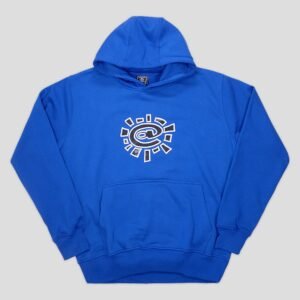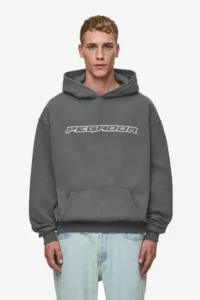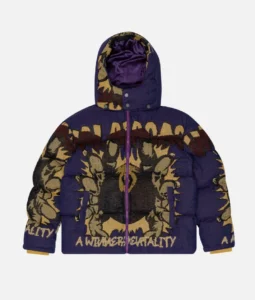When it comes to outdoor adventures, having the right sleeping bag can make all the difference between a cozy, restful night and a shivering, miserable experience. With countless options on the market, choosing the perfect sleeping bag can be a daunting task. Fear not, fellow adventurers! We’ve crafted this comprehensive guide to help you navigate the world of sleeping bags and find the ideal companion for your next excursion.
When Choosing a Sleeping Bag
Temperature Rating
The temperature rating is arguably the most crucial factor when selecting a sleeping bag. This rating indicates the lowest temperature at which the bag will keep you warm and comfortable. It’s essential to choose a bag with a rating suitable for the climate and conditions you’ll be encountering.
Insulation Type
Sleeping bags typically use two types of insulation: down or synthetic. Down insulation, derived from the plumage of ducks or geese, is lightweight, compressible, and highly efficient at trapping warmth. However, it loses its insulating properties when wet. Synthetic insulation, on the other hand, retains its warmth even when damp but tends to be bulkier and heavier than down.

Shape and Fit
Sleeping bags come in various shapes, including mummy, semi-rectangular, and rectangular. Mummy bags are designed to maximize warmth by conforming closely to the body shape, while rectangular bags offer more room to move around but may be less thermally efficient.
Weight and Packed Size
If you’re backpacking or engaging in activities that require you to carry your gear, the weight and packed size of your sleeping bag become crucial considerations. Lightweight and compressible bags make for a more comfortable journey, but they often come with a higher price tag.
Sleeping Bag Temperature Ratings Explained
Understanding temperature ratings is essential when selecting a sleeping bag. Here’s a breakdown of the most common ratings:
| Temperature Rating | Description |
|---|---|
| Summer Season (35°F to 50°F) | Ideal for warm weather camping and summer backpacking trips. |
| Three-Season (20°F to 35°F) | Suitable for spring, summer, and fall adventures in most climates. |
| Cold Weather (0°F to 20°F) | Designed for cold weather camping, winter backpacking, and mountaineering. |
| Winter/Extreme Cold (below 0°F) | Intended for extreme cold conditions, such as winter camping or high-altitude expeditions. |
Insulation Types: Down vs. Synthetic
Down Insulation:
- Pros: Lightweight, compressible, and highly efficient at trapping warmth.
- Cons: Loses insulating properties when wet, more expensive, and requires special care.
- Fill Power: A measure of down’s loft or fluffiness, with higher fill power indicating better insulation.
Synthetic Insulation:
- Pros: Retains warmth when wet, dries quickly, and typically more affordable.
- Cons: Heavier, bulkier, and may need to be replaced more frequently due to compaction.
- Types: Common synthetic insulations include polyester, Primaloft, and Thermoball.
Sleeping Bag Shapes and Fit
Mummy Bags:
- Designed to maximize warmth by conforming closely to the body shape.
- Efficient heat retention due to minimal excess space.
- Best for cold-weather camping and backpacking.
Semi-Rectangular Bags:
- A hybrid shape that combines the warmth of a mummy bag with added room in the shoulder and hip areas.
- Provides a balance between warmth and freedom of movement.
- Suitable for various outdoor activities.

Rectangular Bags:
- Offer a roomy, relaxed fit for maximum freedom of movement.
- Ideal for car camping or indoor sleepovers.
- May sacrifice some thermal efficiency due to excess air space.
Women-Specific Bags:
- Designed to accommodate the typically shorter stature and different body proportions of women.
- Often feature extra insulation in the foot and torso areas.
- Ensure a better fit and improved warmth for female adventurers.
Weight and Packed Size Considerations
Lightweight and compressible sleeping bags are a must-have for backpackers and hikers who need to carry their gear over long distances. These bags typically feature high-quality insulation and lightweight materials to minimize weight and bulk.
However, ultralight sleeping bags often come at a premium price and may sacrifice some warmth or durability. It’s essential to strike a balance between weight, packed size, and thermal efficiency based on your specific needs and budget.
Sleeping Bag Features and Extras
Beyond the core considerations, several features and extras can enhance the functionality and comfort of your sleeping bag:
- Draft Collars and Hoods: Help seal in warmth by preventing heat loss through the neck and head areas.
- Zipper Types: Full-length zippers allow for easy entry and exit, while dual sliders provide ventilation options.
- Stash Pockets: Conveniently store small items like headlamps, phones, or snacks within reach.
- Pad Sleeve/Attachment System: Keeps your sleeping pad in place, preventing sliding or rolling off during the night.
- Water-Resistant Fabrics: Protect against moisture and condensation, ensuring your insulation stays dry.
- Compression Sacks: Compact your sleeping bag into a small, portable package for easy carrying.

FAQS (FREQUENTLY ASKED QUESTIONS)
Q: How do I determine the appropriate temperature rating for my sleeping bag?
A: Consider the coldest temperatures you’ll encounter during your planned outdoor activities, and choose a bag rated for at least 10-20 degrees Fahrenheit lower than that temperature to account for individual comfort levels and variations in weather.
Q: Is down or synthetic insulation better?
A: Down insulation is typically lighter, more compressible, and more efficient at trapping heat, making it a popular choice for backpacking and lightweight adventures. However, synthetic insulation retains its warmth when wet and is often more affordable, making it a suitable option for wet or humid conditions.
Q: How do I care for and maintain my sleeping bag? A
: Follow the manufacturer’s instructions for proper cleaning and storage. Avoid compressing your sleeping bag for extended periods, as this can damage the insulation. Use a compression sack only for transportation, and store your bag loosely in a breathable sack or hung up when not in use.
Q: Should I choose a mummy bag or a rectangular bag?
A: Mummy bags are more thermally efficient and best suited for cold-weather camping and backpacking, where warmth and weight are priorities. Rectangular bags offer more room to move around, making them a better choice for car camping or indoor sleepovers where space isn’t as limited.
Q: How do I know if a sleeping bag will fit me properly?
A: Check the manufacturer’s sizing guidelines, which typically consider height and shoulder girth. Women-specific bags are designed to accommodate shorter torsos and different hip-to-shoulder ratios. Try on different bags in a store if possible to ensure a comfortable fit.
Q: Can I use a sleeping bag liner to extend the temperature rating?
A: Yes, using a sleeping bag liner can add warmth and help extend the temperature rating of your bag. Liners also help keep your bag cleaner, prolonging its lifespan.
Q: How do I choose the right sleeping pad to use with my sleeping bag?
A: Select a sleeping pad with an R-value (insulation rating) appropriate for the expected temperatures. For colder conditions, consider a thicker, more insulated pad to prevent heat loss to the ground.
Q: How often should I replace my sleeping bag?
A: The lifespan of a sleeping bag depends on its quality, care, and usage. High-quality bags can last 5-10 years with proper care and storage. However, if you notice significant loss of loft, tears, or moisture resistance, it may be time to invest in a new bag.
Final Words
Choosing the perfect sleeping bag is an investment in comfort, warmth, and overall enjoyment during your outdoor adventures. By considering factors like temperature rating, insulation type, shape, fit, weight, and packed size, you can find the ideal sleeping bag to suit your specific needs and preferences.










